Andrew Robson was in town last week to deliver a presentation for the Bonsai Society of San Francisco. For those who don’t know Andrew, he recently wrapped up a three-year apprenticeship with Michael Hagedorn in Portland, Oregon.

Andrew working on a dwarf quince
Andrew is an incredibly talented bonsai professional with a focus on deciduous species (check out his work here). He recently started his business, Rakuyo Bonsai, and now tours the country presenting to bonsai organizations and working for clients.
During his visit to the Bay Area, Andrew stopped by the garden to offer a few tips on pruning deciduous bonsai. His first tip relates to directional pruning.
On species like elm or ume, leaves grow in an alternate pattern, with one leaf on the left, followed by one on the right and so on.
When pruning to a leaf that grows on the left side of a branch, a new bud will grow to the left. Similarly, pruning to bud on the right side of a branch will encourage the tree to produce a bud that grows to the right. Here’s what this looks like on an ume bonsai.

Semi-cascade ume
Normally, Andrew would recommend cutting the branch just above the first leaf to keep the internodes short.
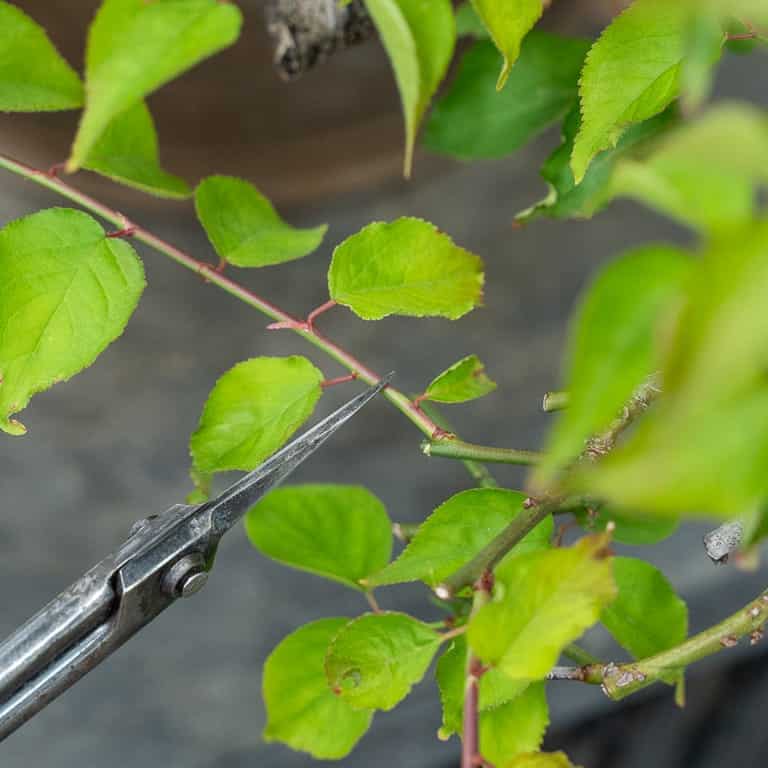
Scissors marking the point between the first and second leaves on a shoot
Cutting here, however, would encourage the tree to produce a branch that grows toward the trunk of the tree. As the idea is to create branches that grow outward (away from the trunk), pruning between the second and third leaves is a better option.
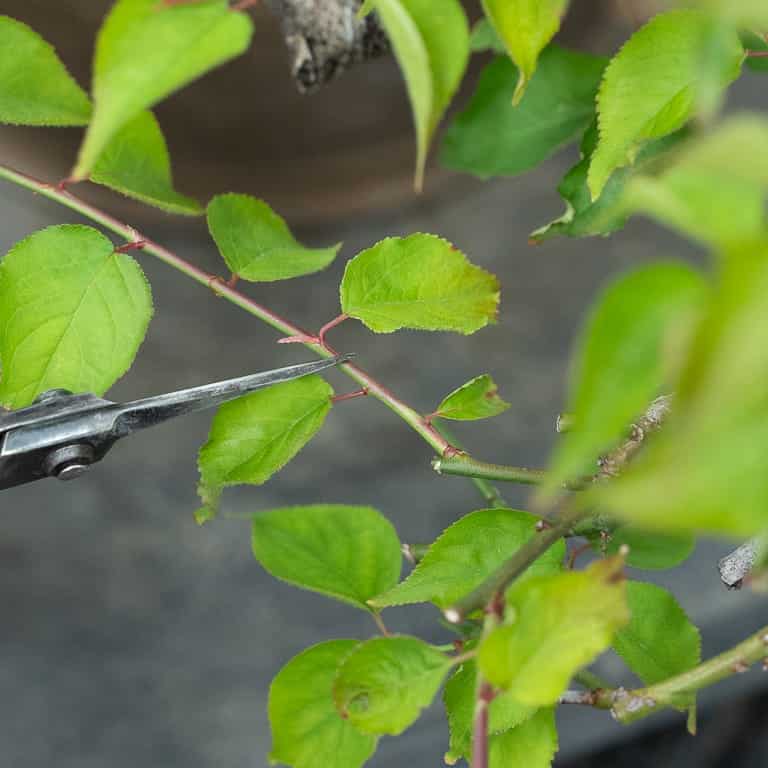
The second leaf points away from the trunk
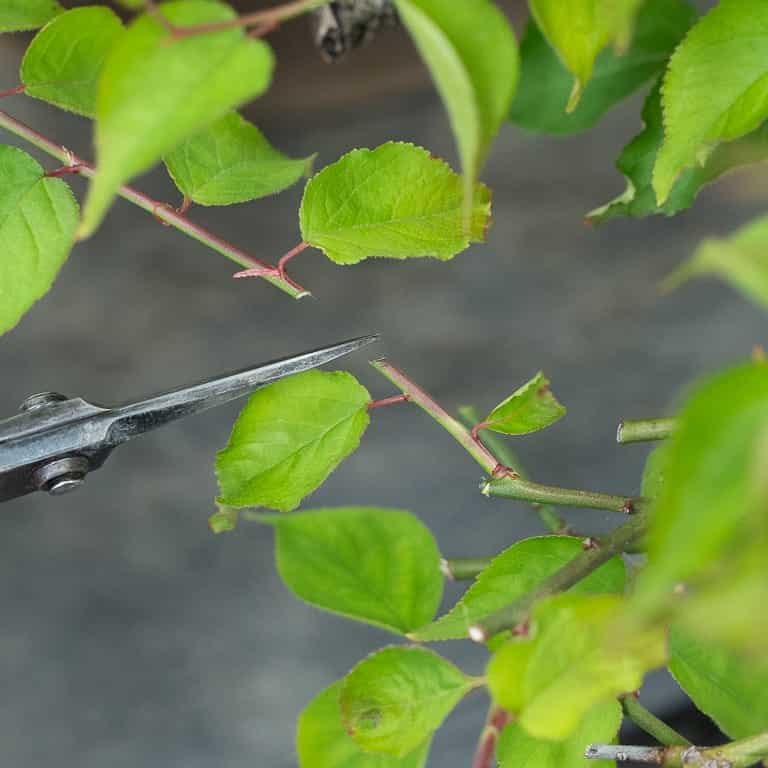
Cutting to an outward facing bud
Andrew shortened most of the shoots on the tree in a similar fashion, preferring the shorter internode when possible and keeping a second leaf when it pointed away from the trunk.
Some branches only produced a few leaves. Andrew recommended leaving these alone to avoid weakening them further.
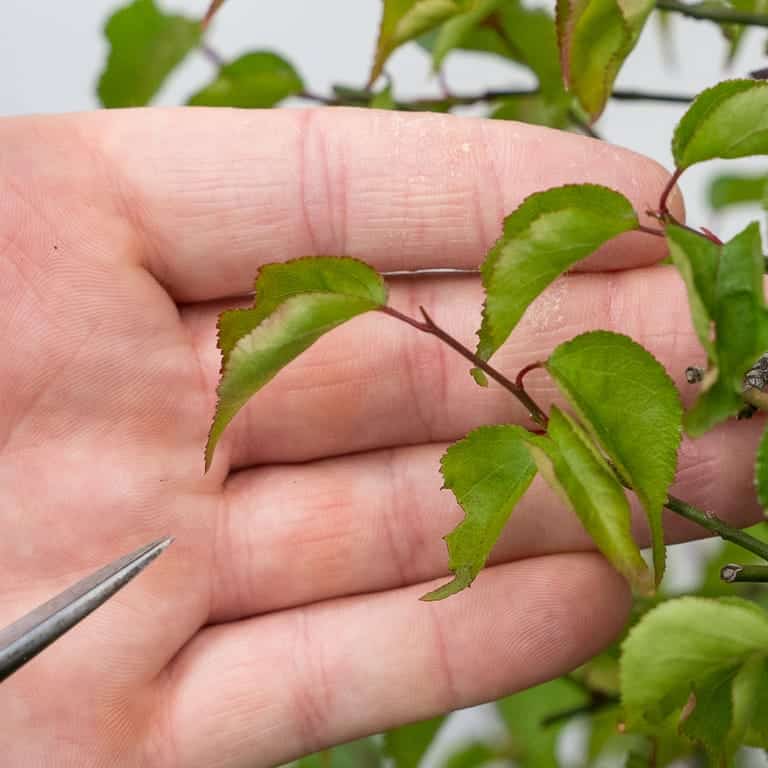
Less vigorous branches don’t need pruning
Summer is also a good time to remove stubs created during previous cutback sessions.
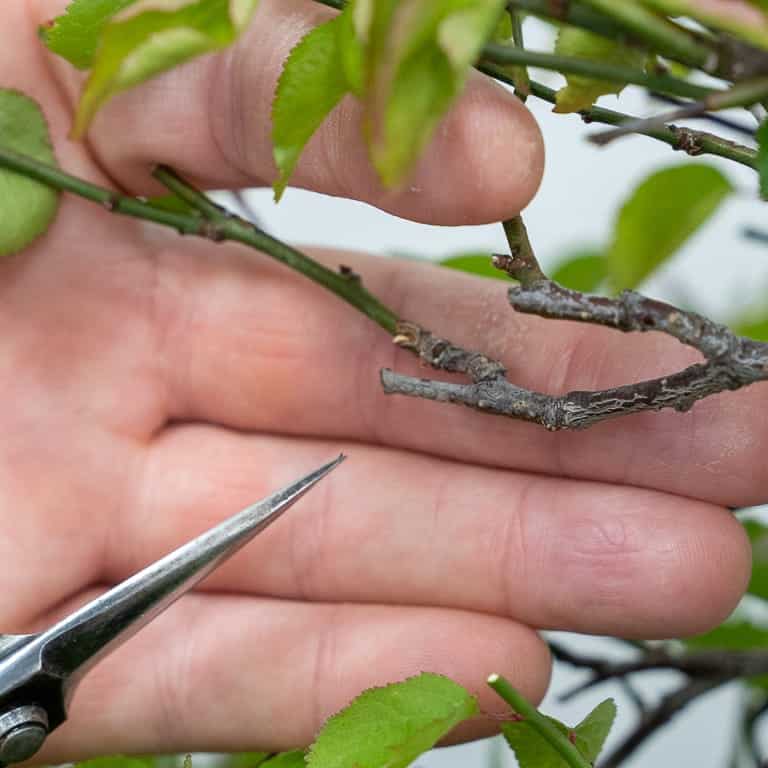
Stub from previous cutback

Cutting at the base of the stub
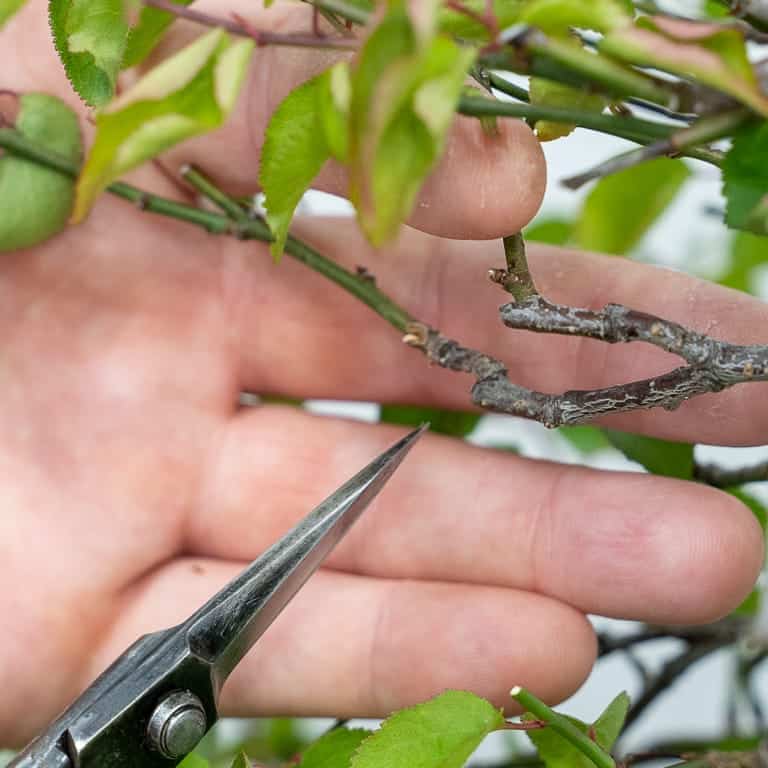
Stub removed
Spring cutback doesn’t take long. Here’s what the tree looked like after a few minutes when cutback was complete.
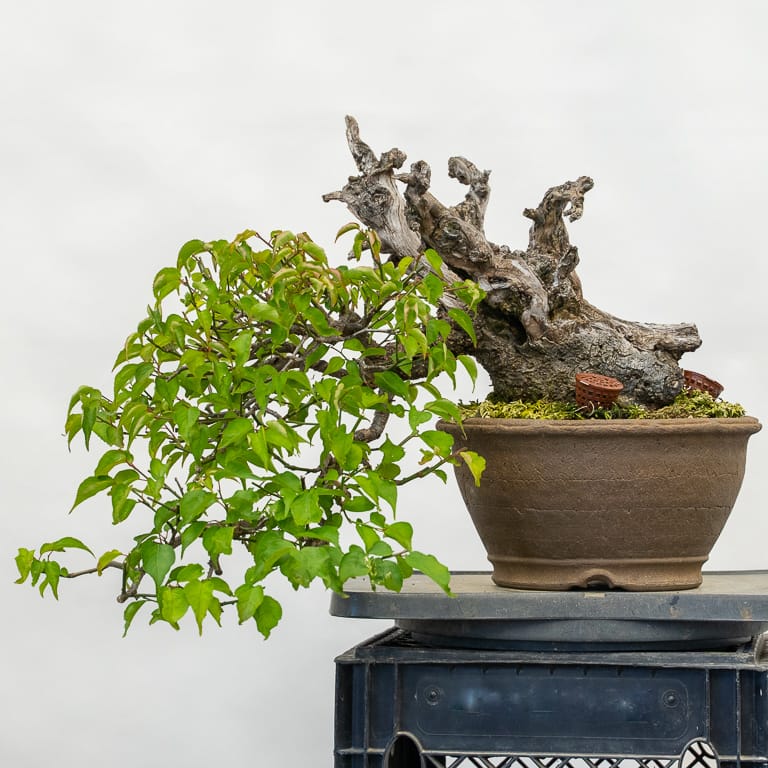
Ume after cutback – 12″ tall, 21″ wide
Tune in Friday for Andrew’s tips on trident maple development. For more information about Andrew, check out his website, Rakuyo Bonsai.
Subscribe to Bonsai Tonight
New Posts Delivered Every Tuesday and Friday
Lars says
Super helpful post Jonas. I assume the same principle holds true on other alternating species like hornbeam?
Jonas Dupuich says
Thanks Lars! That’s exactly right. Alternate leaf species give us good options for creating movement in branches though we can’t always cut back as far as we’d like.
Charlie Mosse says
Very informative. Good descriptions along with good photos. Easy to apply to other species. Thanks!